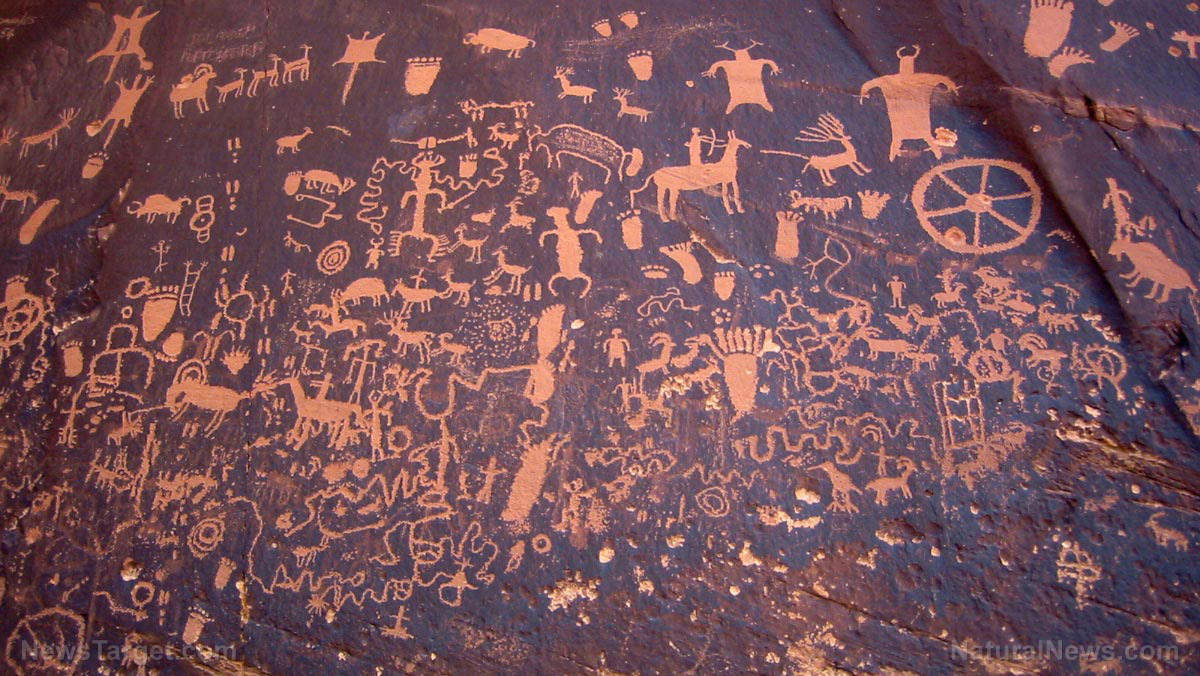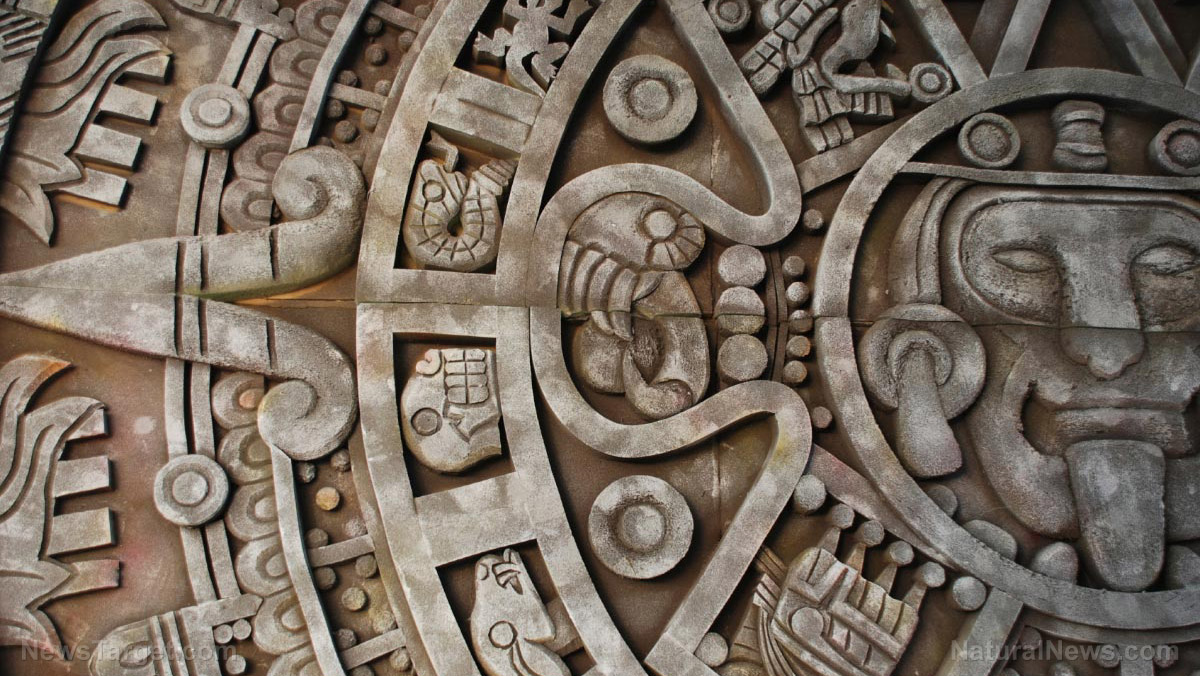CT scan reveals 49 amulets worn by 2,300-year-old “golden boy” mummy
01/27/2023 / By Kevin Hughes

A computerized tomography (CT) scan of a 2,300-year-old mummy, dubbed the “golden boy,” revealed that he was wearing 49 amulets at the time of mummification.
The CT scan was performed by a team from the Kasr Al Ainy Hospital’s department of radiology and the Museum of Egyptian Antiquities (MEA) in the Egyptian capital Cairo. Following the scans, the researchers used 3D printing to make the amulets tangible. The biggest amulet found in the mummy was then interpreted into a printable format.
“Here, we show that this mummy’s body was extensively decorated with 49 amulets, beautifully stylized in a unique arrangement of three columns between the folds of the wrappings and inside the mummy’s body cavity, explained Cairo University‘s Sahar Saleem, who is involved in the endeavor.
Of the 49 amulets discovered on the “golden boy,” 30 were either made entirely of gold or had golden parts. The 19 other amulets were either made of stone, fired clay or Egyptian faience – a ceramic material made of silica and coated with a brightly colored varnish.
The coffin of the “golden boy” was first discovered in 1916 at a necropolis in Nag el Hassaya, the cemetery of the Egyptian city of Edfu. He was laid in two coffins: an inner sarcophagus made of wood and an outer coffin that had Greek inscriptions. “Golden boy” had been stored away at the basement of the MEA prior to the CT scan and the 3D rendering of the amulets he had.
He is believed to have come from a wealthy and powerful family based on the things he was buried with, including a “lavish gilded mask.” The “golden boy” lived during the Ptolemaic period between 330 and 30 B.C., and was around 15 years old at the time of death. While research has not determined the cause of death, there were no signs that it was unnatural. (Related: Archaeologists uncover a dark chapter in Ancient Egyptian history: 60 Mummies found with evidence of GRUESOME deaths.)
Following the examination, “golden boy” was moved from the basement to the MEA’s main exhibition hall for display. Researchers said the 2D and 3D images form the CT scan will be used in a short documentary movie that will play alongside the mummy’s display. Moreover, they added that the 3D printed models of the amulets will be shown to visitors, who will be allowed to see and touch them.
Researchers explain the amulets found on “golden boy”
Among the amulets found with “golden boy” include a golden heart scarab next to his thoracic cavity, a golden tongue in his mouth and a two-finger amulet next to his uncircumcised penis.
The golden scarab was considered important in ancient Egypt, as the jackal-headed god of the underworld Anubis would weigh the dead person’s heart against the feather of truth owned by the goddess Maat. The scarab was believed to silence the heart, making the person more likely to pass through the afterlife. It was also believed to act as a substitute for the heart if the organ went missing.
The golden tongue was believed to have enabled the boy to speak in the afterlife. Meanwhile, the amulet beside his penis was said to protect the embalming incision.
The boy wore an Isis knot, which was thought to invoke the power of the goddess Isis – the deity in charge of fertility, motherhood, magic, death, healing and rebirth – to protect the mummified body. He was also adorned in fern garlands and was fitted with sandals.
Saleem said the sandals were probably meant to enable the boy to walk out of the coffin. “According to the ancient Egyptians’ ritual Book of The Dead, the deceased had to wear white sandals to be pious and clean before reciting its verses,” he explained.
Follow Discoveries.news for more news about mummies.
Watch this video about a 2,000-year-old mummy with a golden tongue discovered near the Tomb of Osiris
This video is from the Kim Osbøl – Copenhagen Denmark channel on Brighteon.com.
More related stories:
Recent study reveals ancient text found in 2012 is the “oldest map of the underworld in existence.”
Sources include:
Submit a correction >>
Tagged Under:
3D printing, afterlife, amulets, Ancient Egypt, ancient Egyptians, Book of the Dead, breakthrough, CT scan, discoveries, funeral rituals, golden boy, mummies, mummification, Museum of Egyptian Antiquities
This article may contain statements that reflect the opinion of the author
RECENT NEWS & ARTICLES
COPYRIGHT © 2018 BREAKTHROUGH.NEWS
All content posted on this site is protected under Free Speech. Breakthrough.news is not responsible for content written by contributing authors. The information on this site is provided for educational and entertainment purposes only. It is not intended as a substitute for professional advice of any kind. Breakthrough.news assumes no responsibility for the use or misuse of this material. All trademarks, registered trademarks and service marks mentioned on this site are the property of their respective owners.




















